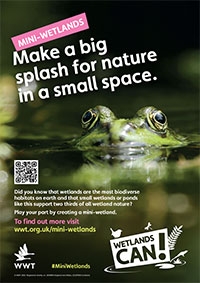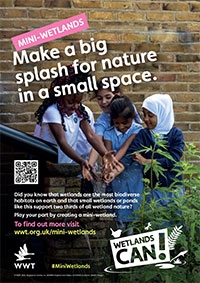How to create a community mini-wetland
Mini-wetlands like community ponds, are a simple, yet incredibly powerful way to help nature. And they’re great for us too.
So, if you’re thinking of creating a stress busting, nature boosting, climate fighting community pond, look no further. This guide has everything you need to know.
With thanks to Groundwork who worked with us to create this guide.
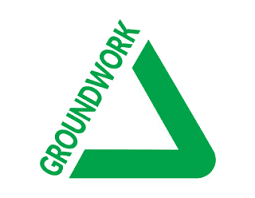
Why create a wetland?
Mini wetlands, like a community pond, are amazing and help us in so many ways. First off, they’re one of the best ways to help nature.
A mini wetland is also a beautiful feature to add to your surroundings. But they do so much more. They help cool our cities, store our water during droughts and protect us from floods, making them an essential tool in the fight against climate change. They’re also great for our health and wellbeing. Filled with colour and life, they provide a welcome refuge from the stresses of everyday life.
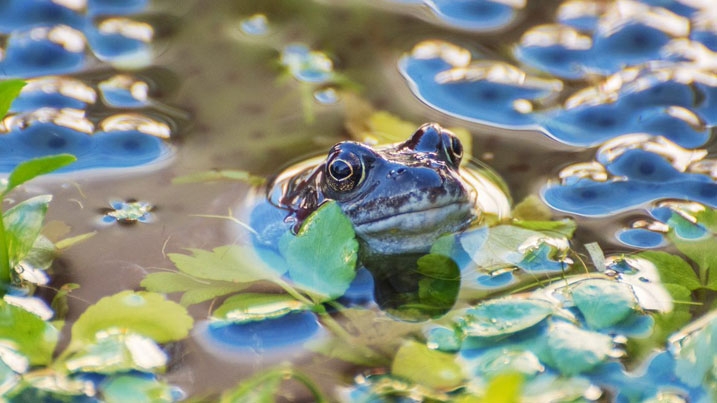
What type of wetland do I want?
Mini wetlands come in all shapes and sizes. You could build a wildlife pond. Or maybe you already have a boggy area in your local green space? In which case, why not turn it into a rain garden. It can act as a flower bed that can also collect rainwater, before slowly allowing it to drain into the ground. Raingarden planters are a similar option for smaller spaces. Different features can also be linked together. For example, you could design your pond so it flows out into a raingarden during heavy rain.
Find out more about how to create mini wetlands that store rain water (called SuDS).
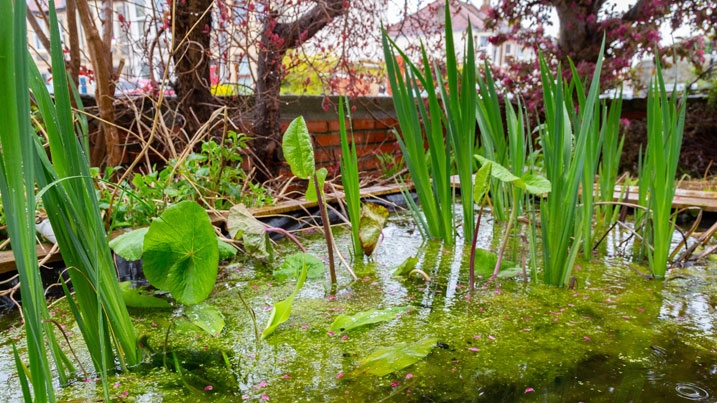
Where can I put my mini wetland?
A mini wetland can go in almost any green space. Maybe you have a local park, or some space at the side of a play area or sports pitch? A wildlife pond can also be a fantastic addition to your school or nursery grounds, Scout huts and Guiding halls, community gardens and halls.
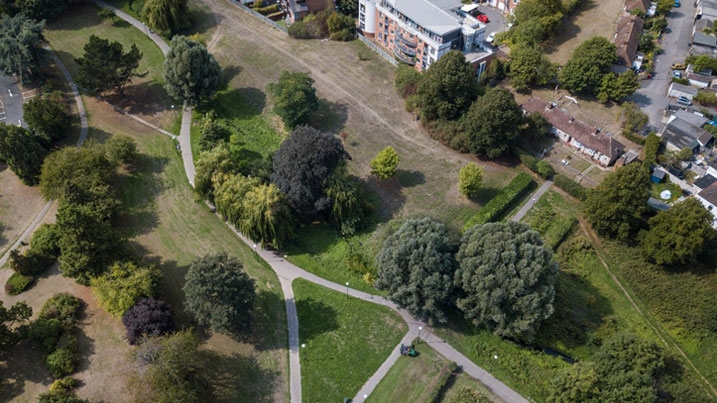
Creating wetlands as a community
Creating a mini wetland or pond in your community is a great way to come together with your friends and neighbours to create an amazing public space that everyone can enjoy.
There may already be existing groups you can work with to create a wetland, such as a local friends of parks group, or a local green group. If there’s nothing already set up, why not start your own? This doesn’t necessarily have to be a formal group. There’s lots of ways to organise yourself. The Wildlife Trusts have lots of information on how you can do this. Your council’s local volunteer service may also be able to help with setting up a group and finding volunteers.
Another option is to work with a local school to create a mini wetland in school grounds. Somerset Wildlife Trust have specific resources on how to encourage wildlife in school grounds, including how to create a school pond. Just bear in mind that a school wetland many not necessarily be publicly accessible.
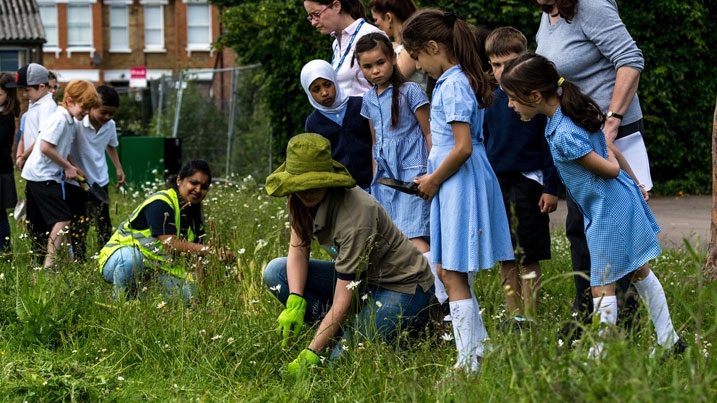
Engaging your community
When trying to create a wetland in a public space, it’s important to work collaboratively. The more people feel involved, the better the result is likely to be. Because you’ll be making a change to a shared space, it’s crucial local people are given the chance to get involved.
Develop a vision for your wetland with your community and share it with as many people as possible and get their input too. Set out what you want to create and where, but also why. It’s important everyone is given the opportunity to find out about the many benefits your new wetland will bring, including climate resilience.
You could even see if a local pub or community space will let you hold meetings so people can come together and share ideas. It’s also the perfect opportunity to recruit more volunteers to help create your wetland.
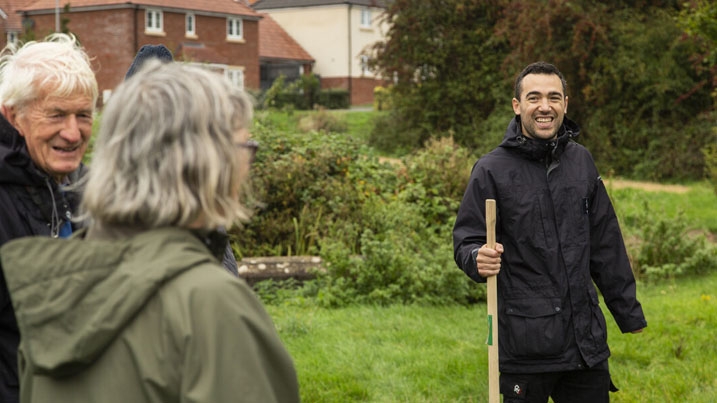
Working with your local council
It can be helpful to involve your local council in your plans. Especially if they control the land where you would like to create your wetland. Even if they don’t, they may be able to help you talk to the organisation that does, such as an estate management company or local sports club. They may also be able to help with funding for the wetland’s creation and upkeep. They can also help you meet any rules that may apply to the land, such as drainage requirements.
Your first point of contact should be your local councillor. Or your council may have their own biodiversity officer. Your local MP may also be able to help you find the right person.
When talking to the council, make sure you have a clear plan for what you want to do and why. It will help if you can explain some of the benefits that your wetland will bring. If possible, try to also show how your proposal will help meet council objectives, such as those in local climate or biodiversity plans. This will increase the chances of them wanting to help.
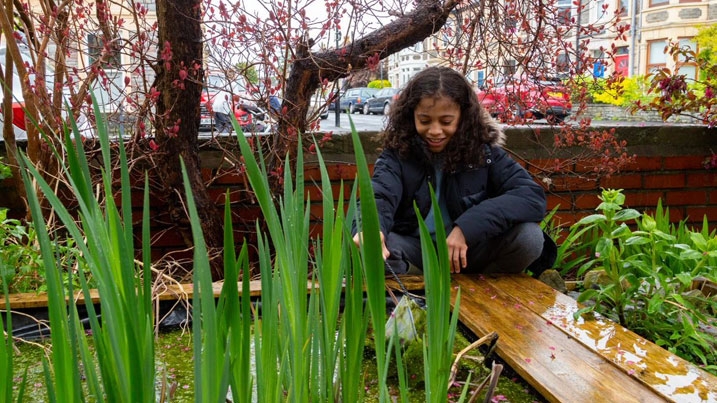
Funding your wetland
You’ll need at least some funding for materials, plants and other things to make your wetland. Depending on where you want to put your wetland and how big it’s going to be, you may also need to fund things like removing tarmac.
There are a variety of potential funding options:
- If you’re only planning a small scale project, local fundraising through bake sales or sponsored events may be enough to get you the materials you need.
- Grants may be available in your area for community groups from your local council, local charities, lottery funds, even water companies. Opportunities will be specific to your local area. Try searching your council website or looking on GrantFinder.
- The Wildife Trusts have further advice on funding community nature projects, while Groundwork have advice on applying for funding.
Enjoying the fruits of your labour
Once you’ve got your wetland, there are so many fun activities that you can build into the project to encourage more people to enjoy the pond and its wildlife. You could hold planting days, pond dipping, wildlife counting and bug hotel making, to name just a few.
These activities will not only make your wetland more enjoyable, you’ll also be helping reach out to different groups in your community. The more people feel included, the more benefits the wetland will bring, and the more likely it is to be a long-term success.
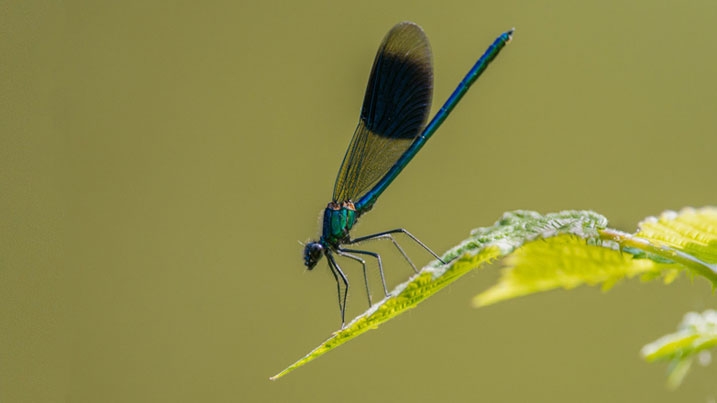
Further tips and advice
Don’t forget to celebrate
Working alongside friends and neighbours to create a wetland is a fantastic way to build friendships. Once you’ve reached milestones within your project, take time to celebrate your achievements and congratulate yourself and your community. It’s really important to recognise all the hard work as this will keep people involved in the project long term.
Spread the word
Local press and social media is a great way to spread the word and help people feel their efforts have been worthwhile. It also helps people value the new wetland and so reduces any issues like littering. You could also download and display these posters about mini-wetlands:
Caring for your wetland
Don’t wait to talk about ongoing maintenance until the project is complete. Your wetland will continue to need some upkeep. Plants might need pruning, silt may need clearing, litter may need picking and repairs may be needed to any structures. Make sure your group is committed to working on the wetland long-term. It’s a good idea to set out clear roles and responsibilities for maintenance. And as your group changes over time, be prepared to find new volunteers and assign new roles. And don’t forget your local council may be able to help directly with maintenance tasks or provide some financial help for upkeep. They might also be able to help with ongoing recruitment of volunteers.
We hope you’ve found this guide useful and good luck with creating your community wetland!
If you’d like to learn more about how to create a community wetland, why not register your interest in our webinar.
Register your interest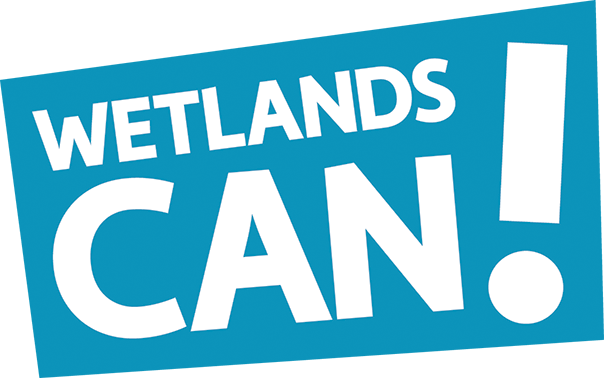
Help us to push for even bigger wetlands in your area
Add your name to our Wetlands Can pledge today and help us push for another 100,000 hectares of wetlands in the UK.
